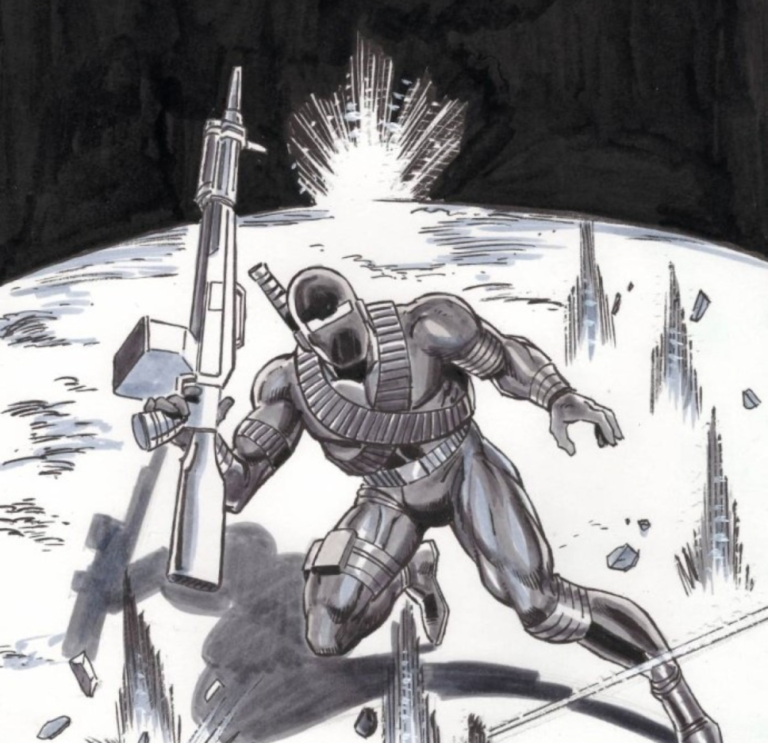Albert Khuzairov
Star Wars was a game-changer for the toy industry, comparable to the first appearance of Superman. Before Action Comics No. 1, comic books consisted mostly of reprinted newspaper strips and funny animals. The success of Superman changed the entire media. With dozens of new superheroes introduced every week, sales skyrocketed. The industry was reinvigorated as new artists and writers competed to create the next sensation, helping usher in a golden age of comics.
Similarly, there were successful toy product lines before Star Wars. Disney merchandising was at its best since the 1940s. Mattel’s Barbie doll and Hasbro’s GI Joe were notable toy lines at the time. But until Star Wars hit theaters, there wasn’t a toy line that embodied that universal sense of urgency.
Star Wars had a huge advantage. It was a two-hour commercial for Star Wars toys. Space Opera gave Kenner’s toy line context and purpose, allowing children (and adults) to associate with specific figures and vehicles.
Barbie and GI Joe were commonplace, relying on children’s imaginations to give them context and form bonds. However, it lacked the element of relevancy that would lead to repeat sales. Toy companies had seen Kenner’s success but had no way to replicate it. The challenge now was how to access this untapped market.
Commercial television is controlled by the NAB, FTC, and FCC, which have restricted advertising to children to appease watchdog groups who argue that children cannot distinguish between content and advertising. As a result, direct advertising of toys in children’s programming could only include a very limited amount of animation.
In his book The He-Man Effect, Brian “Box” Brown describes a chance encounter between Marvel editor-in-chief Jim Shooter and a Hasbro executive at a party in 1981. Executives discussed the challenges facing toy companies, including restrictions on television advertising and the use of animation in children’s advertising. He pointed out that comic books are not restricted by these regulations.
Shooter suggested creating a cartoon series to provide background and exposure for the toy line, and Hasbro ended up promoting the cartoon on television. Allowing Hasbro to circumvent strict regulations. There were no restrictions on promoting cartoon series on television. Advertisements for the comic could feature action-packed 30-second animated sequences with characters and vehicles.
Once the details were finalized, Shooter began assembling a team for the new book.
Larry Hama, a former Marvel editor and writer, later spoke of the difficulty of assembling the team. “When we pitched this idea to our staff, the reaction was cynical and indifferent. Many of the writers we approached looked down on the project. No one wanted to be involved with a comic book based on a toy line.”
Another problem was the stigma associated with war toys, especially in the immediate aftermath of the Vietnam War. Many refused to work on it on principle.
The final obstacle was financial. Marvel had a set budget for a given series, including artist/writer fees, printing, distribution, etc. GI Joe requires a license fee to be paid to Hasbro, and that license fee is collected from the writer/artist side. In other words, those who agree to work on GI Joe will have their pay reduced.
Larry, a third-generation Japanese American and Vietnam veteran, recalled, “My office was my last office and I was desperate to get any work done. I didn’t have any work for a while, and I didn’t have anything scheduled. When everyone else in my previous office turned down the project, they finally contacted me and I said, sure.”
The world created by Larry Hama, including its heroes and villains, was a huge success. Within three years, the comic became Marvel’s best-selling subscription title. By 1987, he was receiving about 1,200 fan letters each week.
The success of GI Joe prompted Marvel to experiment with its own toy line. Marvel Superheroes Secret Wars is a 12-issue comic book series written by Shooter.
This new approach, pioneered by the Hasbro-Marvel model, has evolved to include production companies. Now that animated content is a proven concept, toy companies were interested in creating rich “worlds” for their toys through animated shows.
Mattel’s He-Man and the Masters of the Universe (1983), Hasbro’s Transformers (1984), LJN’s Thundercats (1985) and more than a dozen other series dominated television screens.
The GI Joe: A Real American Hero comic has been reprinted and translated many times around the world. The animated series and subsequent animated and live-action films are all based on Larry’s work. GI Joe also continued to sell a significant number of toys.
AI-generated content can be wrong. ”>
Albert Khuzairov is the showrunner of Cosmic Con, the premier comics, science fiction, and fantasy convention held in Queens, New York. In 2025, we expanded and moved to New York City. Follow him on Instagram.
“A Brief History of GI Joe” will be featured in the comic book format of the same name and will feature several pages of original artwork from issue 105, as well as an article by pop culture historian Roy Schwartz and cover art by Joe Rubinstein that was originally featured on CNN (2024).
A brief history of GI Joe will be available at Mr. Hama’s autograph session on November 13th at Royal Collectibles in Queens, New York. 2025
Something like this:
Like loading…


